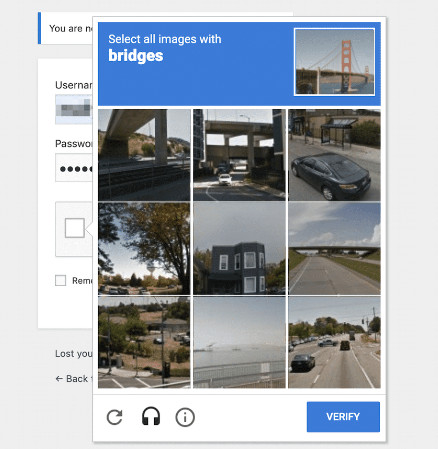
by Renee Bean | Nov 2, 2023 | Digital Marketing, Services, Solutions
In today’s digital age, offering Wi-Fi to your customers can be a game-changer for your business. Whether you run a cozy coffee shop, a vibrant restaurant, or a stylish boutique, providing free Wi-Fi is not only expected but also a valuable asset for your customers. But how can you ensure that your Wi-Fi offering benefits both you and your customers? The answer lies in implementing a Captive Portal using compatible devices from brands like DrayTek – and you don’t need to be tech-savvy to get started.
What is a Captive Portal?
A Captive Portal is a login page that appears when a customer connects to your Wi-Fi network. It serves two primary purposes: authentication and engagement. Users must log in or accept terms and conditions before gaining access to the internet. This simple process provides you with valuable customer insights and a platform for marketing your business.
The Benefits of Captive Portal for Your Business
Customer Data Collection
By requiring users to log in, you can gather essential data such as email addresses and contact information. This information is a goldmine for creating targeted marketing campaigns and building customer relationships.
Customised Branding
Your Captive Portal can be customised to match your business’s branding and style, creating a consistent experience for your customers.
Legal Protection
Captive Portals can include terms and conditions that users must accept. This helps protect your business from potential legal issues related to internet usage.
Marketing Opportunities
You can use your Captive Portal to promote special offers, events, and loyalty programs to your customers. It’s an effective way to engage with your audience.
Getting Started with Compatible Devices: A Non-Technical Guide
Compatible devices, like those from brands like DrayTek, offer user-friendly platforms that allow you to implement a Captive Portal without needing extensive technical knowledge. Here are the basic steps to get you started:
Make sure your network is equipped with compatible devices such as routers or access points. These devices will serve as the gateway to your internet service.
The platform you choose provides a user-friendly interface for setting up your Captive Portal. You can customise the portal page with your business logo, terms and conditions, and any promotional content you’d like to display.
Decide how you want users to log in. You can choose from options like a simple email and password login or a social media login, depending on your preferences and the information you want to collect.
Once your Captive Portal is up and running, you can start monitoring user activity and collecting data. The platform offers tools to analyse user behaviour, helping you better understand your customers.
With the customer data you collect, you can launch targeted marketing campaigns, offer personalised discounts, and build customer loyalty. This is where the real magic happens.
Implementing a Captive Portal with compatible devices is an excellent way to enhance the customer experience at your business while reaping the benefits of valuable customer data. It’s a win-win situation, and you don’t need to be a tech expert to get started.
In conclusion, offering free Wi-Fi is no longer enough – you need a Captive Portal to maximise the potential of your internet service. With compatible devices from brands like DrayTek, it’s easier than ever to implement this powerful tool and grow your business. So, don’t miss out on this opportunity to boost your customer engagement and improve your marketing strategy. Get started with a Captive Portal today and watch your business flourish!
Curious about marketing strategies & techniques for gathering client data? Let’s talk!

by Renee Bean | Oct 10, 2023 | Cybersecurity, Web Design
In today’s digital age, protecting your website from cyberattacks is crucial for all businesses, big or small. Cyberattacks can lead to data loss, website downtime, and harm your company’s reputation. To help you safeguard your website, we’ve put together these 10 straightforward tips that anyone can understand and implement.
Use passphrases that combine 4 random words and add numbers and special characters to comply with password requirements. Avoid using easily guessable information like birthdates, names or “password123.”
Enable 2FA to add an extra layer of security. It usually involves receiving a code on your mobile device when logging in.
Regularly update your website’s software, including plugins and themes. Hackers often exploit outdated software.
Back up your website’s data regularly. In case of an attack, you can restore your site to a safe state.
Install security plugins or extensions that can help protect your website from common threats. These tools can offer features like firewall protection and malware scanning.
CAPTCHA is a simple way to prevent automated bots from accessing your site. Implement CAPTCHA on login forms and contact forms to reduce the risk of unauthorised access and spam.
Be cautious about emails asking for personal information or containing suspicious links. Phishing emails can be harmful.
Choose a reliable hosting provider that offers security features like firewalls and malware scanning.
Conduct periodic security audits to identify vulnerabilities and address them promptly.
Keep yourself updated on the latest cybersecurity threats and best practices. Knowledge is your best defence. Scroll down below this article to subscribe to our community and you will recieve the latest tech news and cyber security advice.
Got questions about your website? Let’s Talk!

by KeyTech | Sep 18, 2023 | Business Marketing, Mobile Devices, Solutions, Web Design
Having a strong online presence is crucial for businesses of all sizes. Your website is often the first interaction potential customers have with your brand, making it a powerful tool for attracting and retaining customers. But have you ever stopped to ask yourself, “Is my website mobile-friendly?” If not, it’s high time you do. In this article, we’ll explore why having a mobile-friendly website is essential and how you can determine whether your site makes the grade.
Why Should You Care?
1.The Mobile Revolution:
Mobile devices have taken over the internet. In recent years, the number of mobile users has skyrocketed, surpassing desktop users in many regions. People are now accessing websites, conducting research, and making purchases on their smartphones and tablets more than ever before. Failing to cater to this mobile audience means missing out on a significant portion of potential customers.
2. Improved User Experience:
A mobile-friendly website provides a better user experience for your visitors. It loads faster, is easier to navigate, and ensures that your content is readable and visually appealing on smaller screens. A positive user experience not only keeps visitors engaged but also encourages them to stay longer and return in the future.
3. SEO Benefits:
Search engines like Google prioritise mobile-friendly websites in their search results. This means that if your website isn’t optimised for mobile, you may be losing out on valuable organic traffic. Google’s mobile-first indexing means that it primarily uses the mobile version of your site for ranking and indexing, making mobile-friendliness a critical ranking factor.
4. Competitive Advantage:
Having a mobile-friendly website sets you apart from competitors who may not have made the necessary updates. It shows that you’re forward-thinking and committed to providing the best possible experience for your customers.
How to Determine if Your Website Is Mobile-Friendly
1. Google’s Mobile-Friendly Test:
Google provides a handy tool called the Mobile-Friendly Test. Simply enter your website’s URL, and it will analyse your site and provide feedback on its mobile-friendliness. You’ll receive a report with suggestions on how to improve if necessary.
2. Responsive Design:
A responsive web design is a design approach that ensures your website adapts to various screen sizes seamlessly. If your website is responsive, it will automatically adjust its layout and content to fit the screen of the device being used, whether it’s a smartphone, tablet, or desktop.
3. Test on Real Devices:
To get a true sense of your website’s mobile-friendliness, test it on actual mobile devices. Grab your smartphone, tablet, or borrow different devices from friends and family to see how your site looks and performs. Pay attention to loading times, font size, and ease of navigation.
4. User Feedback:
Don’t underestimate the value of user feedback. Encourage your website visitors to share their experiences and listen to their suggestions for improvement. They may notice issues that you haven’t considered.
The importance of having a mobile-friendly website cannot be emphasised enough; it’s now a fundamental necessity. With the increasing number of mobile users, providing an excellent mobile experience can make or break your online success. Use tools like Google’s Mobile-Friendly Test, invest in responsive design, and conduct regular tests to guarantee that your website is up to par. Remember that a mobile-friendly website not only boosts user experience but also offers SEO benefits and gives you a competitive edge in the digital marketplace. Don’t wait; make your website mobile-friendly today and watch your online presence thrive.

by Renee Bean | Aug 25, 2023 | Digital Marketing, SEO, Services, Web Design
Your website is more than a virtual storefront—it’s the gateway to your brand’s success. But like any well-oiled machine, your website requires regular care to keep it running smoothly and efficiently. Welcome to the world of website maintenance, where the true magic happens behind the scenes.
Why Website Maintenance Matters
Picture this: you’ve built a stunning website that captures your brand’s essence perfectly. It’s bringing in visitors, generating leads, and driving sales. But as time goes by, technology evolves, and cyber threats become more sophisticated, your website can begin to lose its lustre. This is where website maintenance steps in as the unsung hero.
Just as you’d lock the doors of your physical store at night, your website needs protection too. Regular maintenance updates, like WordPress, themes, and plugins, form a digital defence system against cyberattacks. Think of it as a virtual moat around your castle, fending off potential hackers and safeguarding sensitive data.
Patience is thin these days, especially when it comes to waiting for websites to load. Maintenance isn’t just about fixing things; it’s about making your website faster and more responsive. Updates clear out the cobwebs, optimise code, and refresh the user experience. A snappy website keeps visitors engaged and boosts your chances of converting them into loyal customers.
Ever stumbled upon a broken link or an error page on a website? It’s like finding a pothole on a well-travelled road – frustrating and off-putting. Regular maintenance sweeps out these digital glitches, ensuring every click leads exactly where it should. Seamlessness isn’t just a convenience; it’s a mark of professionalism that builds trust.
Technology evolves at a dizzying pace, and your website must keep up to stay relevant. With routine maintenance, you’re not just fixing bugs – you’re also adding new features, improving compatibility, and embracing the latest trends. An up-to-date website signals that your business is forward-thinking and committed to providing the best user experience.
Neglecting maintenance might seem like a short-term money-saver, but it’s a classic case of ‘penny wise, pound foolish.’ Regular upkeep prevents minor issues from snowballing into major problems that require expensive fixes. It’s an investment in your website’s longevity and your brand’s reputation.
In a world where first impressions are digital, your website is your calling card. Regular website maintenance isn’t just a technical chore; it’s the foundation of your online success. From protecting your data fortress to enhancing user experiences, the benefits ripple through every aspect of your online presence.
So, let’s redefine ‘maintenance’ from a chore to a strategy – a strategy that cultivates trust, loyalty, and growth. Take a proactive step today and ensure that your website remains a beacon of excellence in the ever-evolving digital landscape. Remember, maintaining your website isn’t just about preserving what you have; it’s about unlocking the potential for what’s yet to come.
Curious About Website Maintenance? Let’s Talk!

by Renee Bean | Aug 14, 2023 | Digital Marketing, SEO
In the digital age, Artificial Intelligence (AI) plays a vital role in the creation of content, including SEO. Traditionally, SEO professionals relied heavily on manual tasks to improve website rankings. However, AI produces content in real-time and automatically optimises it for search engines. While AI-generated content can be a fascinating development in the world of digital marketing, some question its safety and impact on search engine optimisation. In this article, we will discuss the safety of AI-generated content, its effects on SEO, and how to combine AI-generated content with SEO to optimise content for search engines.
Is AI-Generated Content Safe to Use on my website?
The simple answer is yes. AI-generated content is safe to use, provided that the correct tools and processes are in place to generate high-quality content that meets search engine requirements. However, to ensure the integrity of your content, it is important to proofread and edit content generated by AI to ensure that it factual and complies with rules and regulations. AI-generated content is unlikely to cause safety issues for most topics, but improper implementation can lead to copyright infringement and incorrect or fake information. Fake information could harm someone particularly if content is to offer financial advice or medical advice. Therefore, it is essential to assess and double-check the reliability of AI-generated content before adding it to your website.
Does AI-Generated Content Affect SEO?
Incorporating AI-generated content into your SEO strategy can be a promising idea if executed correctly. AI can automate the content optimisation process, thereby reducing the time and costs associated with manual optimisation. However, it is important to ensure that the content generated meets search engine requirements for quality, relevance, and user intent. Poor-quality content generated by AI not only can drop website rankings but also diminish user experience. Google aims to provide users with the highest-quality content that fulfils their information needs, so it is necessary to refine your AI-generated content to meet those requirements.
How to Combine AI-Generated Content and SEO?
Combining AI-generated content with SEO can lead to the creation of better search-engine-friendly content. Here is how to optimise AI-generated content for SEO:
- Know your audience and target keywords: Start by understanding your audience and their search intent, then research the most relevant keywords that your audience is likely to use.
- Generate AI content based on the target keywords: Use AI tools to generate content based on the target keywords. This will ensure the content generated is relevant and optimised for SEO.
- Edit and proofread the AI content: Even though AI-generated content saves time and resources, it is important to proofread and edit the content generated to ensure grammatical correctness and accuracy.
- Monitor and analyse the AI-generated content’s performance: Regularly analysing the performance of AI-generated content helps to identify potential areas for improvement, including SEO improvements.
Optimise AI Content for SEO
To ensure that the AI-generated content is at its best for SEO, it is essential to understand the following:
- Keyword density: It is important to strike a balance when incorporating keywords. Overusing the target keywords (keyword stuffing) can lead to a poor user experience and may be penalised by search engines as it comes across as unnatural and spammy.
- Title and Meta description: Optimise title tags and meta descriptions for increased click-through rates and improved rankings.
- Understand user intent: Ensure that the content generated by AI meets the search intent of the user. Search intent refers to when users search for something on a search engine like Google, they have a particular intent behind their search. It could be informational, transactional, navigational, etc.
- Content layout: Use headers and sub headers to organise the content, as this makes it easier for users to read.
- Add alt text to images: Alt text allows search engines to understand the context of an image.
AI-generated content has the potential to revolutionise content creation and optimisation for search engines. However, it is vital to understand the benefits and risks associated with using AI-generated content. Combining AI-generated content with SEO practices can help to create high-quality content that ranks well in search results. To ensure that the content is SEO-friendly, add appropriate headings, include metadata, and optimise it for user intent. As always, balance remains the key, so it is essential to proofread and edit the content generated by AI to confirm quality and accuracy before publishing. With AI-generated content and SEO combined, businesses can simplify their content creation processes, saving time, cut costs, and increase visibility and user engagement.
Questions? Reach Out to Us Here & We’ll Call You

by Renee Bean | Jul 17, 2023 | Business Marketing, Digital Marketing, SEO
In the rapidly evolving world of digital marketing, staying up to date with the latest tools and technologies is essential. Google Analytics has long been a trusted ally for businesses seeking to measure and optimise their online marketing efforts. However, a momentous change has arrived in the form of Google Analytics 4. In this article, we will explore the key changes that come with this transition and demonstrate how the new Google Analytics 4 can benefit your business.
Google Analytics 4 brings the power of machine learning to the table. By leveraging this advanced technology, businesses gain access to custom insights that provide a deeper understanding of their target audience and customer journey. With machine learning, you can uncover valuable information about popular pages, barriers to conversion, and identify your most valuable customers. Armed with these insights, you can create personalised marketing strategies that effectively target potential customers.
The data collection capabilities in Google Analytics 4 are more flexible and customisable than ever before. It allows businesses to collect information from both online and offline sources, including mobile apps. This comprehensive data collection grants valuable insights into customer behaviour across various touchpoints, enabling businesses to craft highly targeted and personalised campaigns. Moreover, Google Analytics 4 emphasises privacy controls, such as cookieless measurement, ensuring that user data is handled responsibly and compliantly.
Google Analytics 4 offers advanced integration with Google Ads, further enhancing your marketing efforts. The transition to first-party cookies provides improved cross-device tracking, allowing for better attribution of conversions to the correct sources. Additionally, conversion modelling helps measure conversions more accurately, even in cases of incomplete or lost conversion sets. This integration streamlines your advertising strategies, enabling you to make data-driven decisions and maximise your campaign’s effectiveness.
One of the standout features of Google Analytics 4 is its event-driven data model. Unlike its predecessor, Universal Analytics, which focused primarily on tracking views, clicks, and page loads, Google Analytics 4 offers the ability to track a wide range of user activities. Whether it is phone calls, video engagement, downloads, or other actions, this feature empowers businesses to gain a comprehensive understanding of user behaviour across multiple digital touchpoints. By leveraging these insights, you can develop highly customised campaigns that align with user preferences and drive meaningful engagement.
Google Analytics 4 introduces a more streamlined and comprehensive reporting system. With frequent updates on critical metrics, businesses gain a clear view of their performance. The “Analysis Hub” dashboard provides an overview of essential business data, allowing you to delve into analytics data for additional insights effortlessly. This improved reporting capability equips you with the information needed to make data-backed decisions and optimise your marketing strategies effectively.
The transition from Google Analytics to Google Analytics 4 marks a significant milestone for businesses relying on digital marketing to reach their target audience. The new features and functionalities in Google Analytics 4 offer a more user-friendly, flexible, and data-rich environment. By using machine learning-powered analytics, enhanced data collection, and privacy controls, improved integration with Google Ads, an event-driven data model, and streamlined reporting, businesses can gain a comprehensive understanding of their customer journey. Armed with these insights, you can build better relationships with your customers, drive conversions, and propel your business to new heights of success. Embrace the power of Google Analytics 4 and elevate your digital marketing endeavours. To learn more about our SEO services and how we can help you leverage Google Analytics 4 effectively, reach out to us today.
Reach Out to Us Here & We’ll Call You






















